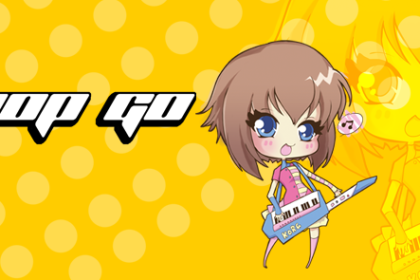The secret life of vocaloids…
It’s not often that you’re given the opportunity to attend a seminar whose topics include virtual superstar Hatsune Miku, but the Daiwa Anglo-Japanese Foundation in London were providing just that opportunity as part of their 2012 Leadership: People and Power in the UK and Japan series.
The Daiwa Anglo-Japanese Foundation was created to support closer links between the UK and Japan. Among its many works it provides grants and scholarships to individuals and institutions, supports organisations that promote links between the two countries and also organises a calendar of events each year that help to promote understanding of Japan and its culture in the UK.
In October of this year the Foundation organised a seminar which was designed to look at the concept of innovation in business. The guest speakers for the event were Dr Jaideep Prabhu, co-author of the book Jugaad Innovation (‘Jugaad’ being a Hindi word meaning an improvised solution using limited resources) and also Mr Hiroyuki Itoh, CEO of Crypton Future Media, creator of the Vocaloid software that spawned the cultural sensation that is Hatsune Miku. The pair gave separate talks on innovative techniques, in the case of Mr Itoh the innovation of a consumer-generated business and how it fits in with traditional Japanese business culture.
If you were curious about how the Vocaloid licencing system worked, this seminar went some way to explaining the concept. As a brand, Hatsune Miku has become extremely popular and extremely valuable. Yet Crypton have chosen to allow users to develop their own artwork, their own videos and their own music based on the image and sounds of Hatsune Miku and the rest of the Vocaloid family. The crucial factor is that the license Crypton gives users is for non-commercial use, which led to the growth of fan-created music and videos – particularly through the Japanese video-sharing website Nico Nico Douga. This is turn helped to establish a market and also helped to raise the profile of the Hatsune Miku brand.

Through an informative Powerpoint presentation, Mr Itoh detailed the process through which Crypton dealt with the various user-generated works based around Hatsune Miku. This includes the creation of the Piapro website which was set up by Crypton as a platform for fans to post their work.
The crucial point is the freedom that Crypton extends to fans who can upload music, artwork and videos to the Piapro website – and in turn other users can then use those works to spawn off their own variations. This leads to an ever-evolving creative process being generated by an ever-increasing fanbase. For instance, there are over 250,000 Hatsune Miku videos on YouTube. In turn, this broadens the awareness of Hatsune Miku to an audience outside of the fanbase and inspires companies to approach Crypton to license Hatsune Miku’s image and appearance to promote their own products. In fact Mr Itoh used the recent example of Google’s use of Hatsune Miku to promote the Chrome browser in Japan.
Meanwhile, the creative process of the fans is becoming increasingly more complex. For instance the Miku Miku Dance program – fan-created software that enables users to produce animated versions of Hatsune Miku or any other character with lip-sync and dance routines.

But Crypton have also expanded the Vocaloid concept into live concerts. At its heart, this idea is ridiculous – creating a ‘live’ concert based around a singer who doesn’t exist. However, Japan has a rich pop culture in which manga and anime play a very important role. The otaku culture has absolutely no problem with placing faith in characters that are not real. And in a brief segment for the benefit of the seminar audience, Mr Itoh shows a clip from a Hatsune Miku concert. The concert crowd are enthusiastically waving their glowsticks towards the towering figure of Hatsune Miku whose fluid movements make it appear as if she is indeed live on stage.
It’s the one area which perhaps is defeating the creative skills of the Vocaloid fans, although unofficial Hatsune Miku concerts are now starting to happen and it’s leading to other areas of innovation. In fact J-Pop Go’s mascot Eva has now been given life for live shows and this idea was inspired largely by Hatsune Miku.
Quite what the audience of the seminar made of this business concept is difficult to gauge. There was certainly some bemusement at how a company could actually generate money based on such a business model. But the key perhaps is the open source element of the Hatsune Miku cult, which is in-step with the growth of social networking sites such as Facebook and Twitter where the free exchange of ideas and information creates it’s own growth. What Mr Itoh demonstrated was that rigid control of an IP is perhaps an outmoded concept and that idea is something that can as easily be ported across to other creative industries.
J-Pop Go extends its warmest thanks to Hiroyuki Itoh. Thanks also to Shihoko Ogawa and the staff at the Daiwa Anglo-Japanese Foundation.
http://www.crypton.co.jp/miku_eng
http://piapro.jp
Text and photos by Paul Browne 11th October 2012








